The 12th-century Ruins Of St Andrew’s Cathedral: Once Scotland’s Largest Cathedral
The 12th-century ruins of St Andrew’s Cathedral are located just south of St. Andrew Castle, along the seafront.
The St Andrew’s Cathedral was once Scotland’s largest cathedral and most magnificent church.
It served as the seat of the Archdiocese of St Andrews, hosting Bishops and Archbishops.
However, its glory days were cut short during the Scottish Reformation in the 16th century, leaving it in ruins.
Today, the cathedral stands as a monument under the care of Historic Environment Scotland, attracting visitors from around the world.

St Andrews Cathedral: The Center Of The Medieval Catholic Church In Scotland
The cathedral was built in 1158 to provide more space than the older church of St. Regulus (St. Rule), which still stands on the cathedral grounds.
This older church, built in the Romanesque style, features a distinctive square tower that reaches 33 meters (108 feet) high.
Nearby, the even older Church of St Mary on the Rock hints at the area’s deep religious roots.
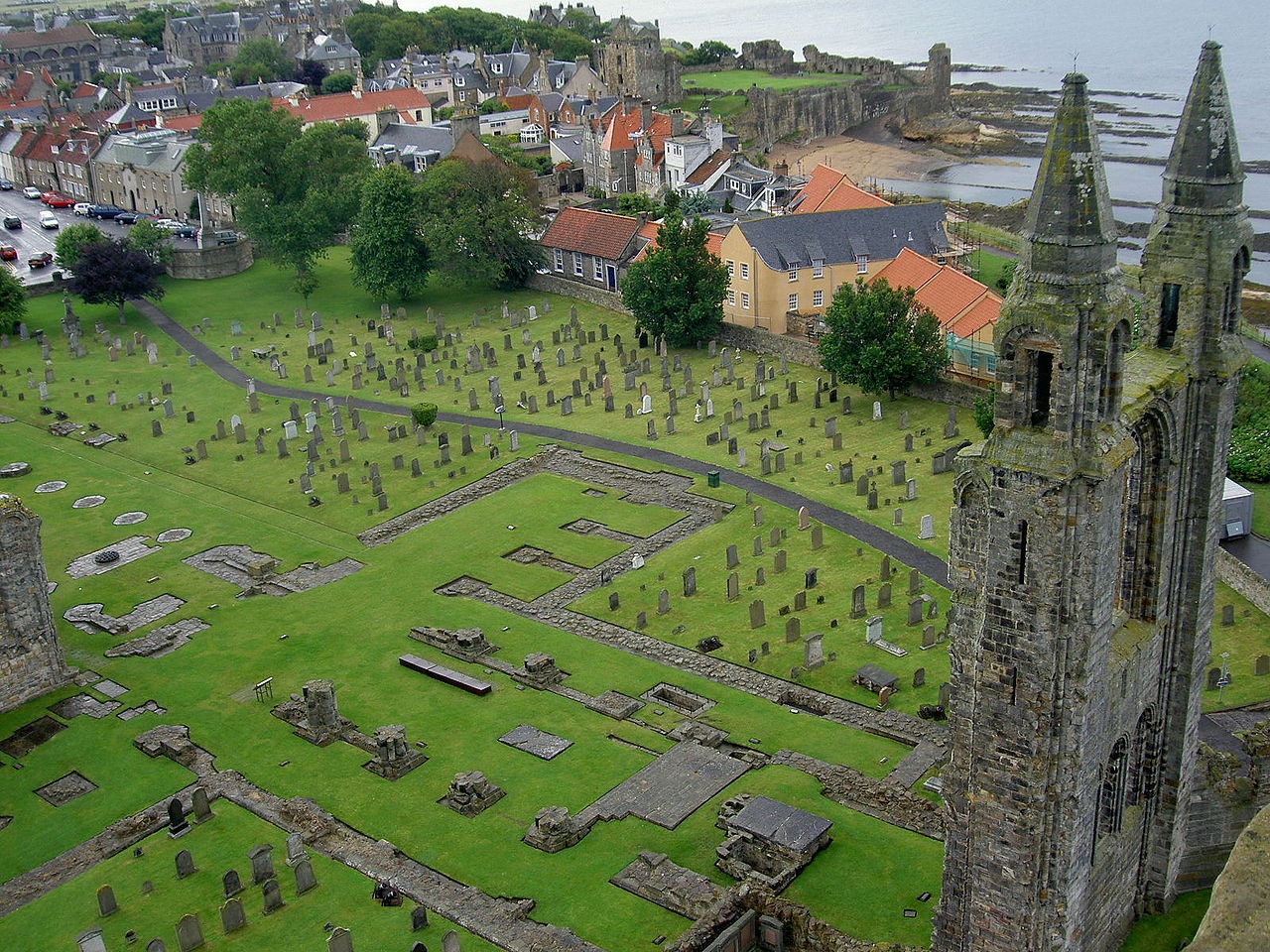
The Cathedral Was Destroyed
In the late 13th century, a storm damaged the west end of the cathedral and it was subsequently reconstructed between 1272 and 1279.
The cathedral was finally completed in 1318 and featured a central tower and six turrets, two of which still rise to a height of 30 meters (100 feet).
Legend has it that King Robert the Bruce rode his horse up the aisle during its consecration ceremony.
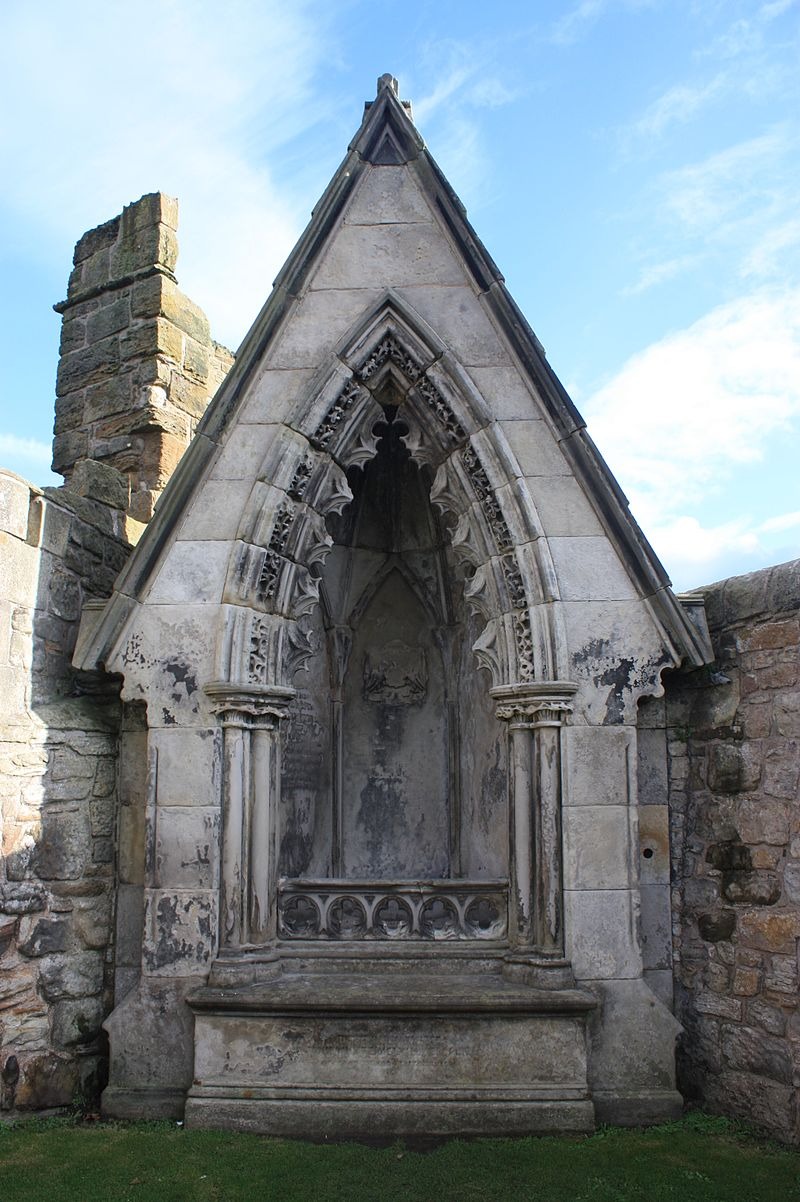
In 1378, a fire partially destroyed the building, but restoration efforts were completed by 1440.
The cathedral was managed by a community of Augustinian Canons, successors to the Culdees of the Celtic church.
By the late 15th century, the town of St Andrews also hosted Greyfriar (Franciscan) and Blackfriar (Dominican) friars.
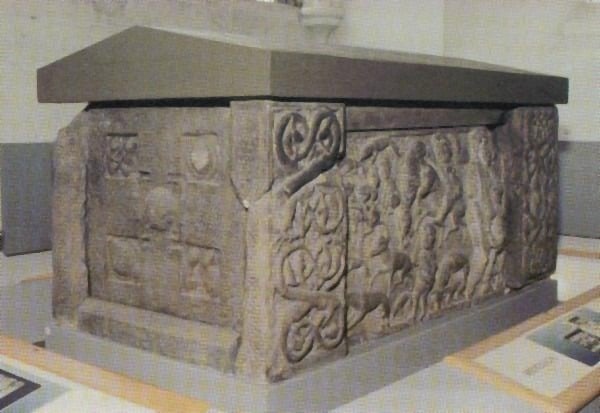
The Cathedral Was Abandoned And Ruined
The cathedral’s decline began in June 1559 during the Reformation, when a Protestant mob was incited by John Knox’s preaching and ransacked the building.
By 1561, it was abandoned and fell into disuse, becoming a source of building materials for the town.
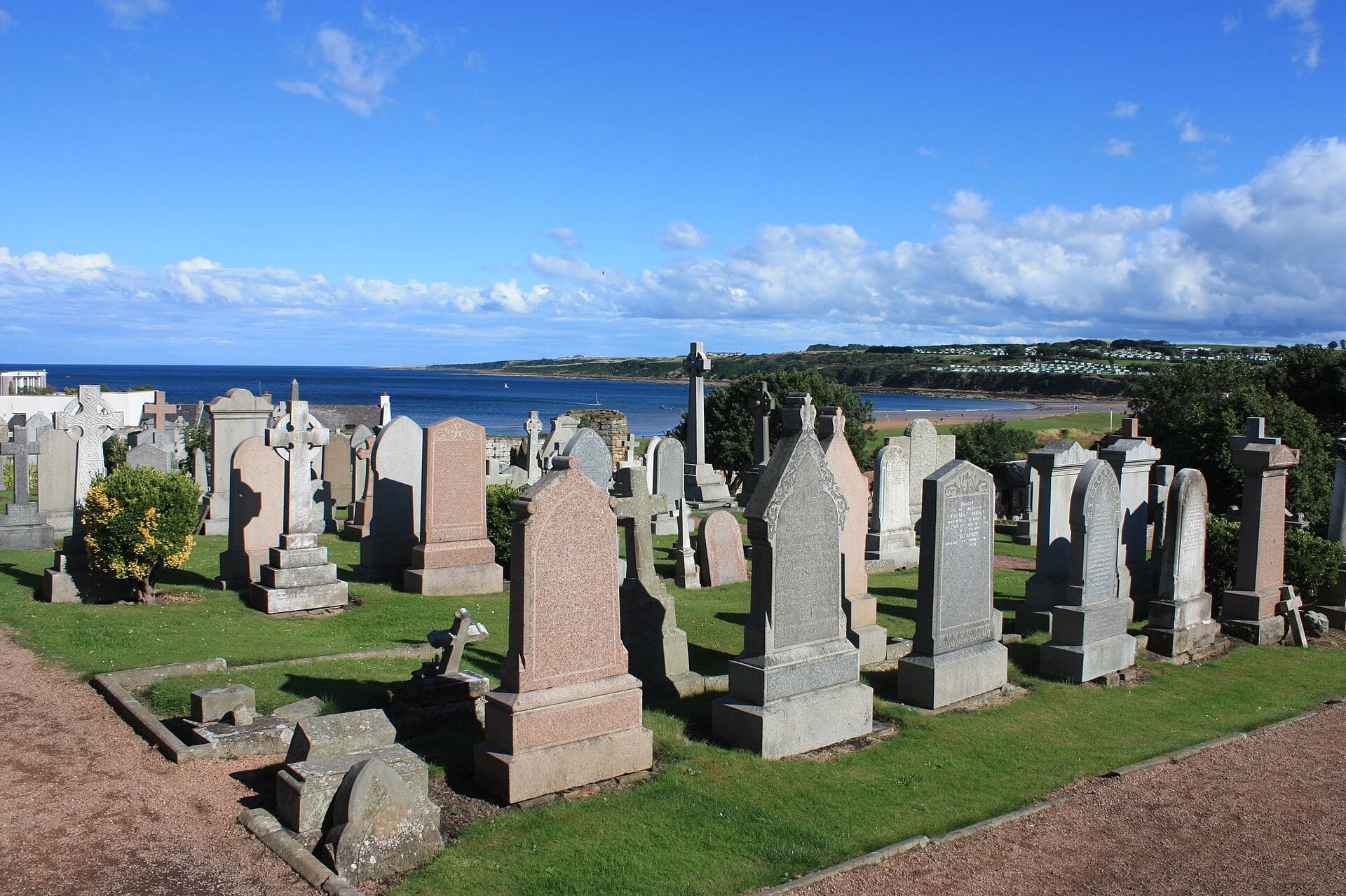
The central tower collapsed towards the end of the 16th century, taking the north wall with it.
Preservation efforts did not begin until 1826, but by then, much of the original structure was lost.
Today, visitors can see the surviving parts of the cathedral, including the east and west gables, which are a mix of Norman and Early Scottish architecture.
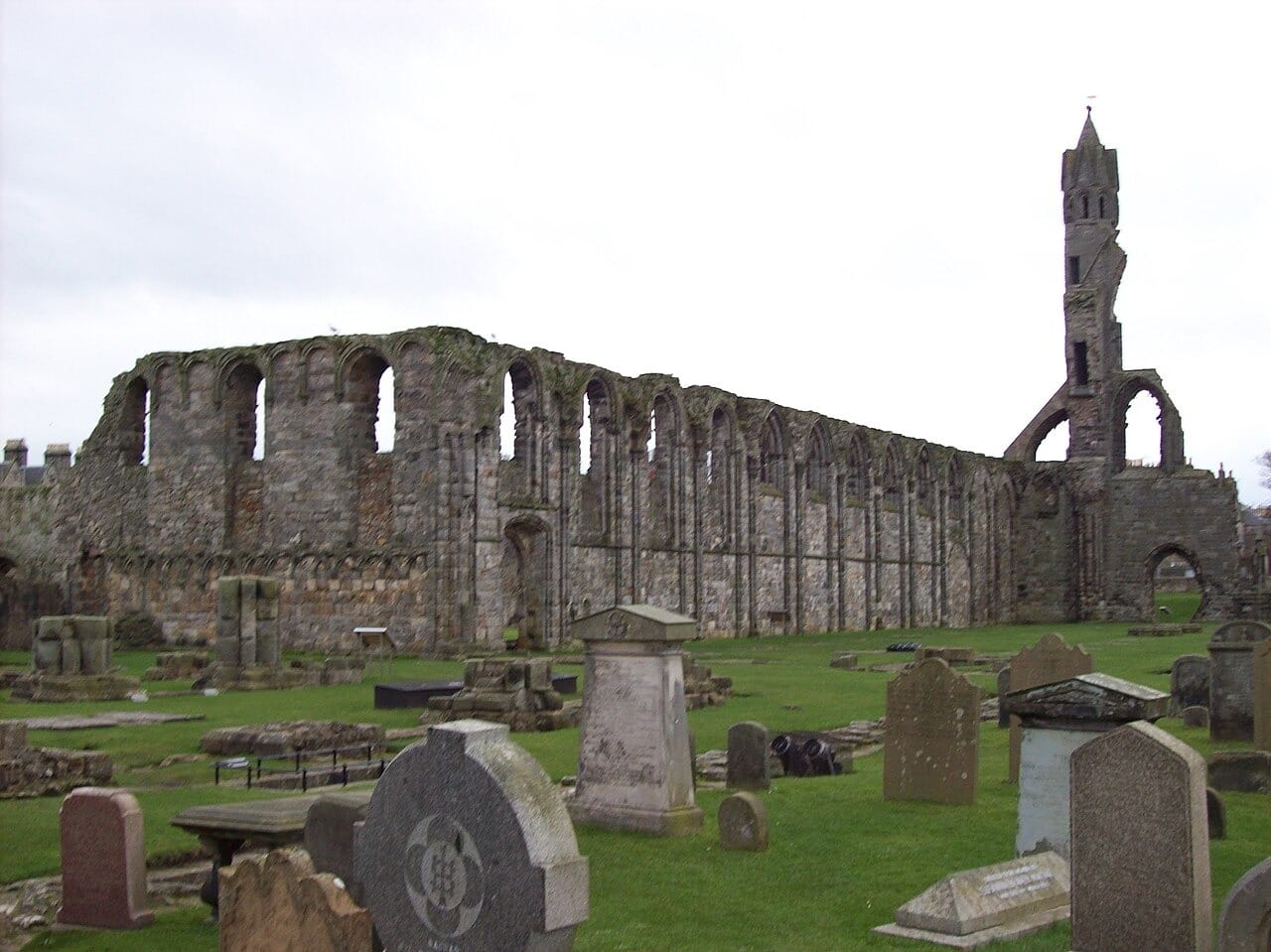
St Rule’s Tower
St Rule’s Tower predates the cathedral, having served as the priory church in the early 12th century.
It housed the relics of St Andrew and remains a prominent landmark, visible from miles away.
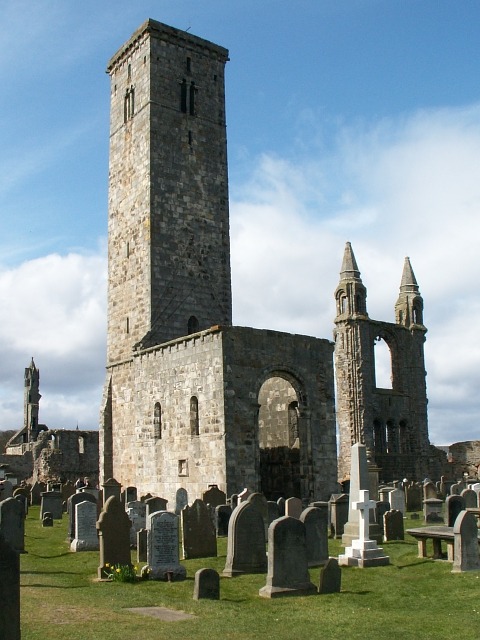
The tower was built of grey sandstone ashlar.
It originally featured a spire, making it even more noticeable.
In the 18th century, a stone spiral staircase was added to replace the original wooden ladders.
Who Is Saint Andrew?
St. Andrew, one of Jesus’ first apostles, was initially a fisherman.
According to the New Testament, while walking by the Sea of Galilee, Jesus saw Andrew and his brother Simon Peter casting their nets.
He called them to follow him, saying, “Come follow me and I will make you fishers of men,” and they immediately left their nets to follow him.
In John’s Gospel, we learn that Andrew was a follower of John the Baptist before meeting Jesus.
He recognized Jesus as the Messiah and brought his brother Simon Peter to meet him.

Andrew became one of the twelve Apostles, playing a vital role in Jesus’ ministry.
He witnessed many miracles, was present at the Last Supper, and saw Jesus after his resurrection.
After receiving the Holy Spirit at Pentecost, Andrew traveled to spread the teachings of Jesus in Greece and Asia Minor.
In 60 AD, while in Patras, Greece, Andrew baptized the wife and brother of the Governor, Aegeus.
Angered by this, Aegeus ordered Andrew’s execution.
Andrew was crucified on an X-shaped cross on November 30, a date now celebrated as his feast day.
This X-shaped cross, known as the Saltire, became a symbol of Andrew and appears on the Scottish national flag, as he is the patron saint of Scotland.

